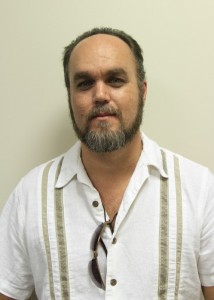 People don’t smoke in school anymore – at least they aren’t supposed to. My office is near an open campus high school, and I see a kid sneaking a cigarette from time to time. Nobody chews tobacco either, or (presumably) has a knife in their pocket. At my high school in south Georgia some kids had gun racks in their trucks, and they had real guns in them. One thing we lacked, unlike today, was a police presence in the school. Another was an alternative school.
People don’t smoke in school anymore – at least they aren’t supposed to. My office is near an open campus high school, and I see a kid sneaking a cigarette from time to time. Nobody chews tobacco either, or (presumably) has a knife in their pocket. At my high school in south Georgia some kids had gun racks in their trucks, and they had real guns in them. One thing we lacked, unlike today, was a police presence in the school. Another was an alternative school.
I am not saying things were better then. It is good that we have less smoking, and after so much highly publicized school violence I understand the zero tolerance policies that have been adopted regarding weapons. I even understand having police officers in the school, and I am sure they are doing the job they have been asked to do. What I don’t like is criminalization of behavior that at one time would have been seen simply as misconduct.
Part of the response to this has been wider adoption of alternative schools across the country. The idea of an alternative school seems logical. Kids are provided with a lower student to teacher ratio, more self-paced study, and a curricula and teaching methods that addresses their deficits. In a lot of places though, this idea is not fully realized. Instead the schools, sometimes filled with the best teachers, become dumping grounds for kids with problems.
The kids with the most needs, instead of being helped at their home schools, are gathered together, and the sheer volume of needs overwhelm the staff and their limited resources. It is, to me at least, reminiscent of a prison environment, and many of the same dynamics begin to play out. Taxed administrations simultaneously ignore many “lesser” disruptions of order, while excessively punishing others. To the students it seems like capriciousness, but it is really a symptom of a system pushed beyond its ability to respond.
Recently, a local school district here in Georgia took this paradigm to the next logical step. Officials in Bibb County, as reported by Georgia Public Broadcasting, opened an alternative school for elementary aged children.
The director of alternative education, Alisha Allen–Carter, explains how the children are controlled: "They enter and exit through one door, there is one rest room. Lunches and breakfasts are brought to the classroom – they don’t go to the cafeteria – giving students less physical space to act out, lessening the stimuli." According to Allen–Carter, teachers demanded the school.
This sounds to my ears like a prison. Combine this kind of setting with the presence of police officers, criminalization of misbehavior, and the already existent school-to-prison pipeline and I have a hard time seeing what good can come from such an experiment.
University of Georgia Professor Cynthia Vail also has reservations, and her’s carry more weight. Vail, of the Department of Communication Sciences and Special Education, points out that these types of schools don’t fall within accepted “best practices” for dealing with students who have behavior problems.
"There are some models out there for high school where we can get some alternative kinds of curricula going, and some more supports that might be needed for safety reasons," Vail said. "But specifically at the elementary school, it seems very odd to have an alternative school for kids with social/behavioral problems."
This doesn’t mean the needs of the teachers shouldn’t be addressed, but that other ways can be found to deal with disruptive students. Teachers need the training and resources to perform that task, and adequate support in their own schools. With these the teachers can do their jobs and the kids can stay in a mainstream school. As Vail points out, only in such a school can they learn more acceptable behaviors, through modeling other students. We shouldn’t “put them away” merely for comfort or convenience. They deserve better, and we can give it to them.

You really have a good point. Alternative school should always be a place of learning. Thank you for sharing this information.